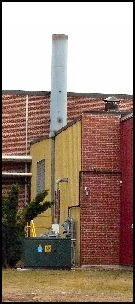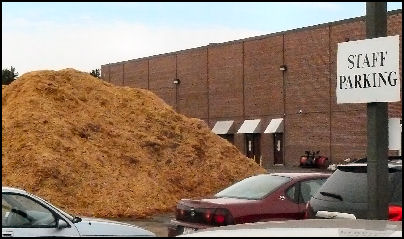| Introduction | Forest Types | |
| Forest Characteristics | Management | |
| Forest Contributions | Special Considerations | |
| The Forest Plan | Assistance |
![]()
FOREST MANAGEMENT GUIDELINES FOR MICHIGAN |
| Introduction | Forest Types | |
| Forest Characteristics | Management | |
| Forest Contributions | Special Considerations | |
| The Forest Plan | Assistance |
![]()
FOREST MANAGEMENT GUIDELINES FOR MICHIGAN |
Special Management Considerations
[Back to main page for special considerations]
Wood Energy and Forest Biomass
Trees and forests have supported human development for thousands of years and certainly are a crucial part of our modern economy. Trees have historically provided heating and cooking fuel but recently have been used as a substitute for fossil fuels to generate a wide range of energy and chemical products.
 Michigan forests certainly have the capacity to sustainably meet increased demands for harvests, especially in forest types and species not previously commercial. Better managed forests will produce more wood fiber and potentially supply greater amounts of feedstocks into the growing bioeconomy. Also, plantations designed to serve the current and emerging markets may provide yet more fiber.
Michigan forests certainly have the capacity to sustainably meet increased demands for harvests, especially in forest types and species not previously commercial. Better managed forests will produce more wood fiber and potentially supply greater amounts of feedstocks into the growing bioeconomy. Also, plantations designed to serve the current and emerging markets may provide yet more fiber.
Woody biomass, a form of cellulosic fiber, can be used to produce heat, electricity, transportation fuels, and a wide range of valuable chemical products. Some improved combustion technologies are currently available, while others remain at least a few years away from commercial production. Wood chips and pellets can provide cost-effective fuel for heating buildings such as schools and homes. Combined heat and power (CHP) plants, sometimes called ‘co-gen’, can be built around towns and cities with existing infrastructure; or where investment in water pipeline construction is feasible in a “district energy” plan. Municipal solid waste can be used to generate both heat and electricity in urban areas.
 Emerging technologies include combinations of biochemical or thermochemical separation of wood components and reforming them into more desirable products. Biochemical processes use water and fungi or bacteria. Thermo-chemical processes heat wood in oxygen-deprived ovens. Target products focus on liquid fuels, such as bio-oils, ethanol, and a range of chemicals.
Emerging technologies include combinations of biochemical or thermochemical separation of wood components and reforming them into more desirable products. Biochemical processes use water and fungi or bacteria. Thermo-chemical processes heat wood in oxygen-deprived ovens. Target products focus on liquid fuels, such as bio-oils, ethanol, and a range of chemicals.
Environmental and ecological considerations of more intense harvest practices may limit production on certain sites or at certain times of the year. However, the greatest constraints from growing the wood portion of Michigan’s bioeconomy are more likely to come from economic and social factors. Government, industry, and research institutions working together with a common purpose will likely produce the best outcomes.

This website is maintained by Bill Cook, Michigan State University Extension
Forest in the Upper Peninsula. Comments, questions,
and suggestions are gratefully accepted.
Last update of this page was 9 January, 2014
This site is hosted by School of Forest Resources and Environmental Science at Michigan Technological University.